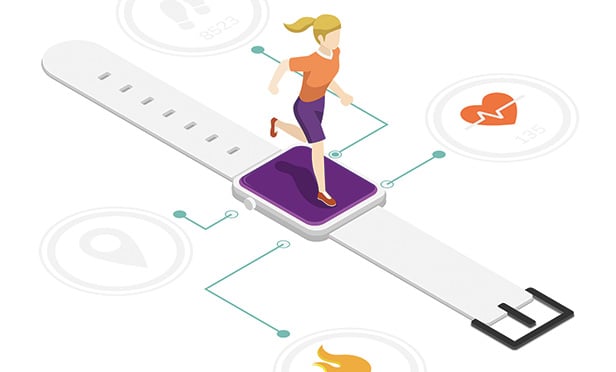 Taking a few simple steps today can set us up to take full advantage of the technological advances that are coming our way tomorrow.
Taking a few simple steps today can set us up to take full advantage of the technological advances that are coming our way tomorrow.
As benefits professionals, there are two recurring issues that likely have you reaching for that bottle of Excedrin on your desk-–managing multiple vendors and looking at multiple, disparate data sets about your employee population. One vendor refers to your people as “members” and is able to tell you about their health care claims, while another refers to them by ID number and tells you about your drug spend. Yet another refers to your people by name and can tell you all about their HRAs—but never the three shall meet.
Consequently, you never get a good sense of the big picture: what are the biggest challenges to your employees' total well-being? How do these issues connect? What tools and resources change their behavior? What else might they need support with? What are the right incentives to get them to really engage? And of course, what can I do lower our costs and determine if our wellness initiatives are generating a ROI?
 Related: 4 trends in employee wellness programs for 2019
Related: 4 trends in employee wellness programs for 2019If you could wave a magic wand, all your vendors would integrate seamlessly, and you would have one robust data set that answered all these questions. Alas, this remains the Holy Grail, but we are getting closer to making this dream a reality. In the interim, there are some steps benefits professionals can take today to begin to get a more complete and integrated picture of employee health and well-being. Taking these steps today can set us up to take full advantage of the technological advances that are coming our way tomorrow.
Expand your definition of wellness and well-being
First, before doing anything, benefits professionals need to understand and embrace a more expanded definition of employee well-being. In the old days we just looked at health care costs, but today we know physical health, mental health, financial and emotional security are all interconnected. Leading employers embrace this new model and definition, even if it poses new challenges to measuring ROI. When we adopt this new definition, we are ready to understand and better affect the big picture.
Understand the root causes of the challenges your people face
Second, we need to better understand the answer to this question: what challenges to well-being does my employee population face? To answer this, most of us rely on some form of data analytics to start. For example, an employer may see claims data that shows a high rate of cardiovascular disease, obesity and diabetes in their employee population. But one data set alone may not truly answer this question. After all, we don't know if the employee population suffers from these lifestyle conditions because they are sedentary, depressed, non-compliant in taking their medication or something else. Although it is a headache, in today's world, a benefits professional may need to look at several different data sets to get a more complete answer to this question.
Choose “best of breed” programs that address these root causes and make them easy to use
Once we understand the root causes of these challenges, we are ready for step three: how to best address them. This is when we find ourselves in a whole new world of online offerings that can be highly personalized. In the world of personal smartphone apps, the growth has been enormous. According to Rock Health, 90 percent of Americans are now using at least one digital tool, such as an app or wearable device, to better manage their health.
Employers are capitalizing on this trend, and many are offering their employees' a mobile, or at least a robust online version of their online health and well-being tools. According to experts who study these trends, “Mobile-first solutions with native apps are growing in popularity and in-demand by the workforce. These solutions act as a consolidated location for members – providing convenient access and facilitating personalization.”
But not all programs and their apps are created equal–some are truly “best of breed” when it comes to driving change, and might also be more or less effective depending on your population's issues. Some work even better when paired with the right incentive. Studies tell us overall participation rates can be as high as 40 percent when an incentive is offered, double the rate that non-incentivized programs achieve. Benefits professionals need to do the research to find the best in breed programs and apps to address the challenges their employee population faces and then make those programs/apps both easy and desirable to use for the employee.
“Easy” can start with something as basic as a single sign on. Personalization is key too—we can't start off by asking the employee with chronic illness to run a marathon.
…And make life easier for yourself too
Managing multiple vendors, programs, apps and data sets is a headache; in the short term, the trends described above can make your headache worse. As the experts at SelfHelpWorks remind us, “Customization and personalization of wellness programs has made them more complex to manage and use.” That's why more employers are looking at solutions that help bring it all together. A platform or hub makes things easier for your people but it also makes life easier for a benefits professional too. As SelfHelpWorks explains, “Organizations are using platforms and hubs to integrate specialized vendor solutions and streamline their programs. At the same time, platforms and hubs can improve the overall user experience.”
Aggregate and integrate to see the big picture and bolster ROI
While today the technology does not yet exist to fully integrate everything, we are getting closer. When we can see the big picture, or at least more of it, we are well positioned to maximize ROI. According to IFEBP in today's world the majority of organizations either don't calculate the ROI of their wellness initiatives or aren't sure if it's measured at all; those that do measure the ROI of their initiatives see an average return of $2.32 for every dollar invested. I believe we can get this dollar figure much higher.
The big picture allows us to understand the root causes of our employees' challenges, and emboldens us to tweak the full suite of programs, tools and incentives we have to help address them. For example, a benefits professional may be able to see that employee anxiety is high and this is a large driver of healthcare costs. A mindfulness program coupled with incentives and other mental health offerings is implemented to reduce employee anxiety, which leads to dramatic healthcare savings and a bigger ROI.
In the short term, these steps I have outlined require elbow grease and some pain. Unfortunately, we are likely still years away from having a solution that fully integrates all vendors and all data. In the short term however, benefits professionals who undertake these steps will be well positioned to truly enhance employee well-being, and see higher ROI.
Read more:
- 3 questions to ask when assessing wellness vendors
- How a proactive approach to health care data can improve worker well-being
- Digital engagement increases wellness plan utilization
 Jim Pritchett is CEO of DHS Group, a provider of employee benefits and wellness solutions. Pritchett's background includes more than 30 years in strategic planning, marketing, sales and business / operational management.
Jim Pritchett is CEO of DHS Group, a provider of employee benefits and wellness solutions. Pritchett's background includes more than 30 years in strategic planning, marketing, sales and business / operational management.
© 2025 ALM Global, LLC, All Rights Reserved. Request academic re-use from www.copyright.com. All other uses, submit a request to [email protected]. For more information visit Asset & Logo Licensing.







